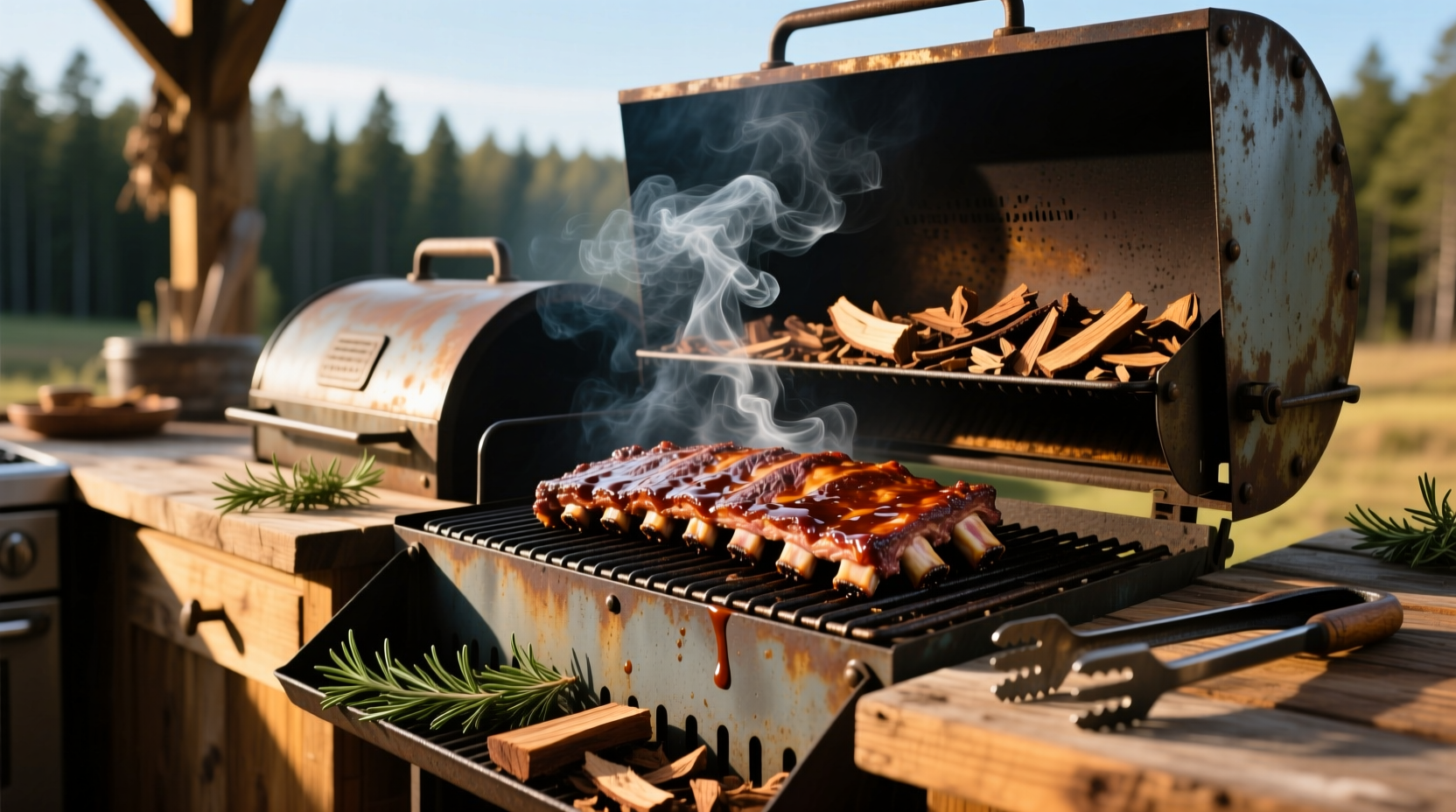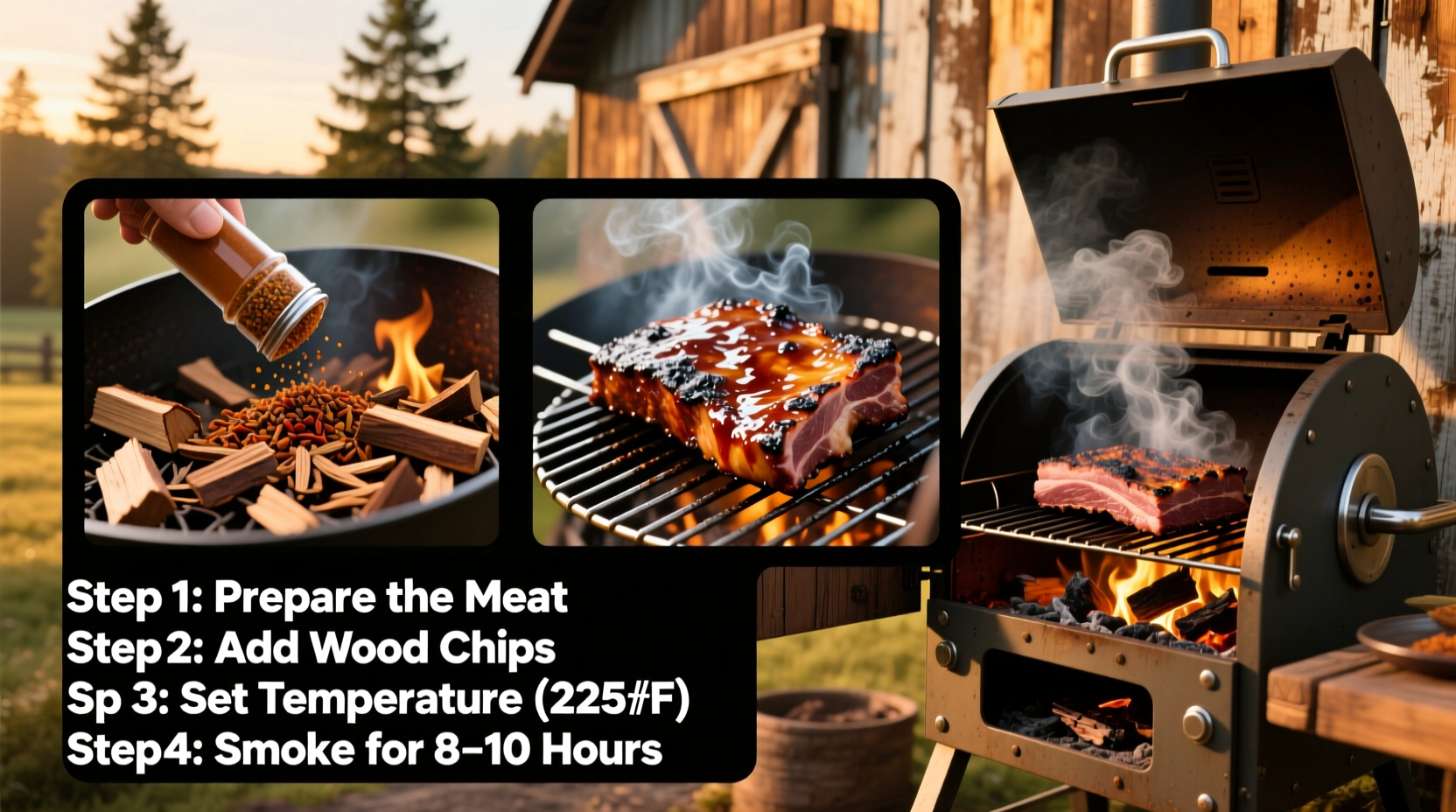Master the art of smoking food with this comprehensive guide that covers essential equipment, wood selection, temperature control, and food safety protocols. You'll learn step-by-step techniques for hot smoking that deliver restaurant-quality results at home, with practical troubleshooting tips to avoid common beginner mistakes.
Smoking food transforms ordinary ingredients into extraordinary culinary creations through the magic of controlled heat and aromatic wood smoke. Whether you're using a dedicated smoker, charcoal grill, or even adapting a gas grill, understanding the fundamentals separates successful smoking from frustrating failures. This guide delivers actionable insights from professional techniques to help you achieve perfectly smoked meats, fish, vegetables, and cheeses every time.
Essential Equipment for Successful Smoking
Starting your smoking journey requires the right tools. While professional smokers exist, you can achieve excellent results with basic equipment:
| Equipment Type | Best For | Price Range | Beginner Recommendation |
|---|---|---|---|
| Offset Charcoal Smoker | Traditional barbecue purists | $200-$1,000+ | ★★★☆☆ |
| Electric Smoker | Consistent temperature control | $150-$500 | ★★★★☆ |
| Charcoal Grill (Kettle) | Budget-friendly option | $50-$200 | ★★★☆☆ |
| Gas Grill Conversion | Convenience seekers | $30-$100 (add-on) | ★★★☆☆ |
According to the USDA Food Safety and Inspection Service, maintaining proper temperatures during smoking is critical for food safety. The danger zone between 40°F and 140°F allows bacteria to multiply rapidly, making temperature control non-negotiable in the smoking process (USDA Food Safety Guidelines).
Your Step-by-Step Smoking Journey
Preparation Phase: Setting Up for Success
Before introducing food to your smoker, proper setup determines your outcome. For charcoal or wood smokers, arrange fuel on one side for indirect heat. Fill your water pan with apple juice or water to maintain humidity and stabilize temperature. Insert wood chunks or chips according to your equipment's specifications—soaking chips isn't necessary and can actually delay smoke production.

Temperature Control: The Heart of Smoking
Successful smoking happens within specific temperature ranges:
- Cold smoking (68-86°F): For cheeses and cured meats (requires specialized equipment)
- Warm smoking (86-122°F): Less common, used for certain fish preparations
- Hot smoking (122-220°F): The standard method for most meats and vegetables
For beginners, target 225°F for most meats. This "low and slow" approach allows connective tissues to break down while keeping moisture intact. Use a reliable digital thermometer to monitor both smoker and food temperatures—don't rely on smoker's built-in gauge.
Wood Selection: Flavor Science Made Simple
Wood choice dramatically impacts flavor profile. Different woods contain varying levels of lignin, cellulose, and hemicellulose that create distinct smoke compounds:
- Fruit woods (apple, cherry, peach): Mild, sweet smoke perfect for poultry, pork, and fish
- Hardwoods (oak, hickory, maple): Medium intensity, versatile for most meats
- Strong woods (mesquite, walnut): Intense flavor best for short smoking sessions or beef
Avoid softwoods like pine or cedar which contain harmful resins. The James Beard Foundation notes that regional wood traditions developed historically based on local availability, but modern smokers can experiment with combinations to create signature flavors (James Beard Foundation Culinary Resources).
Food Preparation: Beyond Just Rubs
While dry rubs enhance flavor, proper food preparation starts days before smoking. For larger cuts like brisket or pork shoulder, consider a 12-24 hour dry brine (salt rub) to improve moisture retention. Pat meats dry before smoking to ensure better smoke adhesion. Remember that smoke penetrates only the outer 1/8 inch of food, so internal flavor comes from seasoning and the meat's own rendered fats.
Troubleshooting Common Smoking Challenges
Even experienced smokers encounter issues. Here's how to address frequent problems:
- Thin blue smoke disappears: Adjust airflow or add more wood—thick white smoke indicates incomplete combustion and can create bitter flavors
- Temperature fluctuations: Check for drafts, ensure proper fuel arrangement, and verify thermometer accuracy
- Meat stalling (temperature plateau): This natural evaporation cooling effect requires patience—pushing through the stall creates better texture
- Bitter aftertaste: Usually caused by creosote buildup from excessive smoke—clean smoker regularly and avoid over-smoking
Food Safety Protocols Every Smoker Must Follow
Smoking combines cooking with preservation, making safety protocols essential. The USDA Meat and Poultry Hotline emphasizes that smoked foods must reach specific internal temperatures to be safe:
- Poultry: 165°F
- Ground meats: 160°F
- Beef, pork, lamb, veal (steaks, roasts, chops): 145°F with 3-minute rest
- Fish: 145°F or until flesh flakes easily
Never partially smoke food and finish later—this creates dangerous bacterial growth opportunities. For cold smoking applications, additional curing steps are required to prevent botulism risks.
Advanced Techniques for Flavor Development
Once you've mastered basics, experiment with these professional techniques:
- Smoke ring enhancement: Apply mustard or thin vinegar solution before smoking to improve smoke adhesion
- Wood layering: Start with milder woods and transition to stronger varieties for complex flavor profiles
- Temperature ramping: Begin at lower temperatures (180°F) and gradually increase to finish cooking
- Resting protocols: Allow large cuts to rest wrapped in butcher paper for 1-2 hours to redistribute juices
Perfect Pairings: Matching Woods to Foods
Understanding flavor chemistry helps create perfect matches:
- Beef: Hickory for traditional barbecue, oak for subtlety, mesquite for intense flavor (use sparingly)
- Pork: Apple for mild sweetness, cherry for rosy color, hickory for classic barbecue
- Poultry: Alder for delicate flavor, fruit woods for subtle sweetness
- Fish: Alder for traditional, apple for mild enhancement, avoid strong woods
- Cheese: Cherry or apple at low temperatures (below 90°F) for subtle infusion
Remember that fattier cuts absorb more smoke flavor than lean meats. The American Chemical Society explains that smoke compounds bind more readily to fat molecules, which is why brisket develops deeper smoke flavor than chicken breast (American Chemical Society Food Chemistry Resources).
Seasonal Considerations for Outdoor Smoking
Weather significantly impacts smoking results. In cold weather, your smoker works harder to maintain temperature, requiring more fuel and longer preheating. During summer months, be mindful of increased risk of bacterial growth during preparation stages. Wind affects airflow and temperature stability—position your smoker to minimize wind exposure. Humidity levels influence how smoke adheres to food surfaces, with moderate humidity (40-60%) generally producing best results.
Frequently Asked Questions
How long does it take to smoke a brisket?
A standard 10-12 pound brisket typically requires 10-14 hours at 225°F. The "Texas crutch" method (wrapping in butcher paper after the stall) can reduce cooking time while maintaining moisture. Always cook to temperature (195-205°F internal) rather than time alone.
Can I smoke food in an electric smoker without wood chips?
No, electric smokers require wood chips, chunks, or pellets to generate smoke flavor. The heating element alone only provides dry heat similar to an oven. For authentic smoked flavor, you must include wood smoking elements in your electric smoker.
Why does my smoked meat taste bitter?
Bitter taste usually indicates creosote buildup from incomplete combustion. This happens when there's insufficient oxygen, too much fuel, or temperatures too low for proper smoke production. Ensure proper airflow, avoid thick white smoke, and clean your smoker regularly to prevent residue accumulation.
What's the difference between smoking and grilling?
Smoking uses indirect heat at low temperatures (180-250°F) for extended periods (hours to days), while grilling uses direct high heat (350°F+) for shorter cooking times. Smoking primarily flavors food through smoke absorption, whereas grilling focuses on searing and caramelization.
How do I know when wood chips need replenishing?
When smoke production visibly decreases or stops, it's time to add more wood. Most smokers require additional wood chips every 45-60 minutes during hot smoking. Listen for the crackling sound of active wood smoking, and watch for thin blue smoke rather than thick white smoke.











 浙公网安备
33010002000092号
浙公网安备
33010002000092号 浙B2-20120091-4
浙B2-20120091-4